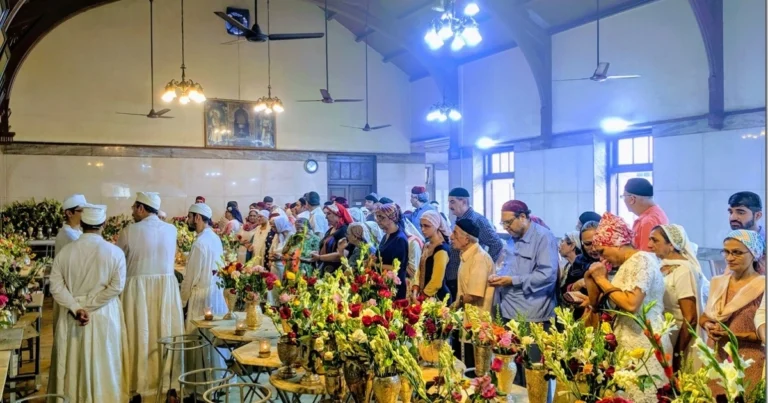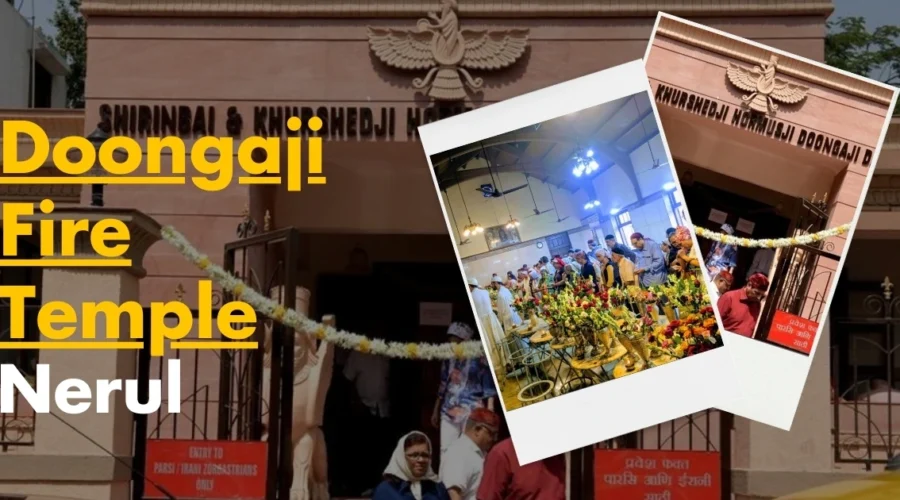Doongaji Fire Temple Nerul: History, Challenge | Doongaji Agiary
The Doongaji Fire Temple, located in Mumbai, is an important place of worship for the Parsi community. It is dedicated to Zoroastrianism, one of the world’s oldest religions, which has its roots in ancient Persia (modern-day Iran). The temple plays an important role in the spiritual and cultural life of the Parsi community, providing a space for prayer and traditional rituals.
History of Doongaji Fire Temple

The Doongaji Fire Temple was built to protect and honor the sacred fire that Zoroastrians worship. A clearer understanding of this is needed for all of them, so probably a few facts about Zoroastrianism itself can help: Zoroastrians worship eternal fire, which stands for purification and is the embodiment of the divine entity called Ahura Mazda.
The temple, founded by Doongaji, a philanthropist and supporter of the Parsi community, this temple grew like a flower into a thriving beacon of Parsi devotion in the early 19th century. The Parsi community was witnessing expansion with schools and charities being set up now. During this time, some were built, such as the fire temple. The Doongaji Fire Temple was established over which the Parsis mustered for prayers and called upon to celebrate various festivals such as Nowruz (Persian New Year) and Muktad (festival of remembrance of the dead) with deep and sincere interest.
Rituals and Worship at the Doongaji Fire Temple
Rituals and Worship at the Doongaji Fire Temple
The temple, founded by Doongaji, a philanthropist and supporter of the Parsi community, this temple grew like a flower into a thriving beacon of Parsi devotion in the early 19th century. The Parsi community was witnessing expansion with schools and charities being set up now. During this time, some were built, such as the fire temple. The Doongaji Fire Temple was established over which the Parsis mustered for prayers and called upon to celebrate various festivals such as Nowruz (Persian New Year) and Muktad (festival of remembrance of the dead) with deep and sincere interest.
Challenges Faced by Doongaji Fire Temple
The Doongaji Fire Temple, being significant, faces certain challenges, most of which are set in the context of changes in both the Parsi community and Mumbai.
- Declining Parsi Population: The number of Parsis in Mumbai has been dwindling due to falling birth rates and many Parsis opting for overseas settlement. As a result, fewer people visit the temple or attend temple activities.
- Preservation of Traditions: The younger generations, influenced by the modern lifestyle, are not always conscious of the traditional rituals. This has added to the difficulty of preventing the old customs from dying away, thereby putting a pressure on the temple to gear up efforts to protect them.
- Maintenance of the Sacred Fire: The job of keeping the sacred fire mixed is, truly, a probing one… The fire must be tended to throughout the day, exterminating all impurities, with a few exceptions here and there as the temple priests work to keep it in a direct line, clean and unobstructed.
- Financial Sustainability: Like many places of worship, the Doongaji Fire Temple grapples with keeping up the funds. Running the temple, the fire, and the rituals is an expensive affair, but donations have shrunk, making it disconcerting to raise the funds for maintaining those expenses.
The Way Forward for Doongaji Fire Temple
Not with standing these challenges, the Doongaji Fire Temple remains a major symbol of the spiritual and cultural inheritance of Parsi community. Some of the initiatives being taken by the temple for its sustained existence:
• Community Engagement: The temple has stepped up its campaign to take younger Parsis on board through outreach programs. These are being pursued to let the younger generation rekindle their ties to the religious heritage and participate in temple activities.
• Education and Awareness: The temple realized its association with the schools and universities could educate people about Zoroastrianism and also about the sacredness of fire. It helped both Parsis and outsiders learn about the temple and its traditions.
• Digital Outreach: The temple has also become modernized and offers virtual tours, prayers online, and accepts online donations. Thus, people can contribute from across the globe and remain connected with the activities of the temple.
Conclusion
The Doongaji Fire Temple is still a prime pillar of the Parsi community in Mumbai, though beset by challenges. It remains a site of worship and preservation of their culture. The temple also nurtures its mission by embracing modernity while preserving its time-tested traditions so as to keep the eternal flame alive for future generations. The temple’s survival depends on community commitment to its faith and heritage.



